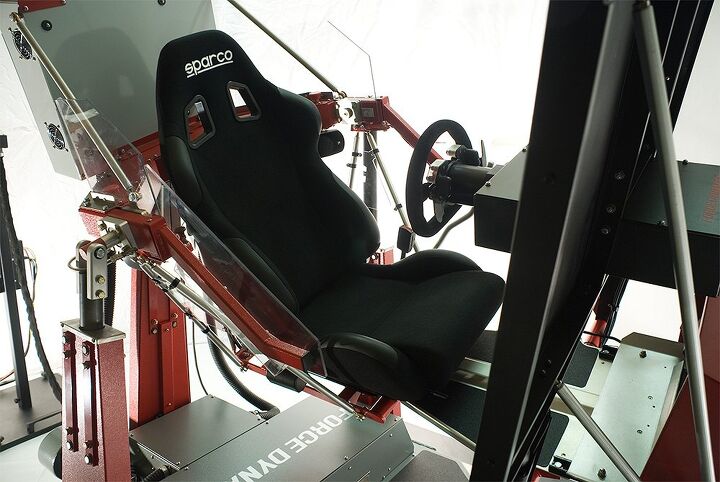TTAC Reader Pits Simulated MX-5 Against the Real Deal [with Video]
My company, Force Dynamics, builds full-motion driving simulators. They work by tilting you as the simulated vehicle corners or accelerates, so your brain is tricked into feeling lateral or longitudinal accelerations.
Sometimes people who watch our machines in action say, “This is moving way too much!” So when we started racing a Mazda Miata in the ChumpCar World Series, I decided to conduct an experiment.
The result: a comparison of the forces you feel while driving a race car with the forces you feel while driving our motion systems. The phone, like your inner ear, can’t tell the difference between being accelerated or tilted. What you see on the phone in each half of the video is what I was feeling in the real car and in the simulator.
How do the two experiences compare? Practicality limits the simulator’s sustained force to about .6 g. Luckily, your perception is enhanced a bit: in the simulator, the force keeping you in the seat gets lower as you tilt, whereas in real life that force is always 1 g, so you feel more “oomph” for a given load in the simulator than you do in real life. There’s also a psychological component. You’re seeing yourself cornering, and you’re getting other secondary cues, too: in the 401cr, your rate of rotation; vibration; sound and fury.
How do the two differ? Well, the real car is easier: your positional awareness is better, and the onset cues are sharper, so it’s easier to read the car on turn-in. Those differences aside, however, I was almost immediately comfortable making the transition to real driving. Shifting, braking, cornering, and handling the car on the limit all made nearly direct transitions to the track; for example, I was immediately comfortable holding the car at small slip angles through long, fast corners, because it behaved exactly like I expected it to.
What this means is while the simulator can’t fully match the sustained accelerations of a real car, the overall feel can be very good, and a high-quality motion platform can help immensely in the transition from simulator to track.
If you have any questions, feel free to ask in the comments.
Submitted by David Wiernicki. You may know him as B&B member PeriSoft in the comments.
More by Ur-Turn
Latest Car Reviews
Read moreLatest Product Reviews
Read moreRecent Comments
- Dick Mottram What happens when you are on slippery pavement and AEB slams on the brakes. I see it causing many accidents in the winter!
- FreedMike Bummer for the folks who work there.
- FreedMike Sounds like Apple wants to recoup some of the bucks it spent on the car project.
- EBFlex Insatiable demand for EVs yet this happens. And a lot more layoffs at Tesla.
- SCE to AUX Maybe some Apple tech would be helpful, but please no self-driving stuff.

































Comments
Join the conversation
Two words: that is super cool.
Hey guys - I'm the guy from the article there (and the Chump in the car). If anyone has any questions, fire away! As for the ones already asked... yeah, it's more expensive than a Chump Car, though I have to say it's probably not THAT much more than all the costs of a few guys running Chump for a couple of years. As for pricing, think about a 5-series. Not the one with pleather and manual mirrors; the one you'd actually drive. So yeah, it's not super cheap. But like I said, if you take running costs into consideration, it starts to look reasonable again, especially if you're comparing it to something like running SCCA regionals: Good luck pulling that off (in most any class) for under fifty grand a year. And then there's the thing I tell people on YouTube: You can crash a simulator more than once!